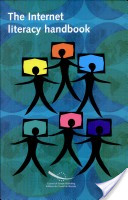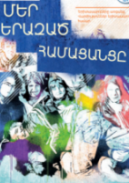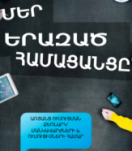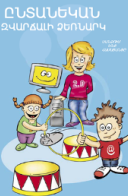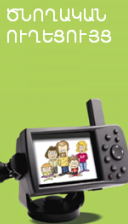Media Education and Media Literacy in Secondary Schools
Round Table Discussion (See Photos)
August 2007
We must prepare young people for living in a world of powerful images, words and sounds (UNESCO, 1982)
 A round table discussion on “Media Education and Media Literacy in Secondary Schools” has been organized by Armenia’s Media Education Center at the Mkhitar Sebastatsy Experimental and Research Union of the Ministry of Education and Science in August of 2007. “Media has become an indispensable part of our lives; children are exposed to thousands images from television, web-sites, movies and billboards,” told Haykaz Baghyan, Director of the Media Education Center, which pioneers initiatives in media education in Armenia. “Dominance of media in our lives is increasing, and traditional literacy skills- the ability to read and write print texts, must be supplemented with media literacy skills- the ability to “read” and “write” audiovisual materials,” told H.Baghyan to the audience of journalists, educators, public sector activists and academics. Media literacy is a course of study in many secondary and elementary schools in the United States and is part of the national curriculum in Canada, Australia, the United Kingdom. According to him, Media Education Center is aimed at introduction of media education in the curriculum using the best international experiences. The Center implements e-learning initiatives and conducts work to raise the awareness of public about safe and responsible use of new media. Professors of the Department of Journalism and Mass Communication of the US University of St. Thomas presented current trends in media education in the United States.
A round table discussion on “Media Education and Media Literacy in Secondary Schools” has been organized by Armenia’s Media Education Center at the Mkhitar Sebastatsy Experimental and Research Union of the Ministry of Education and Science in August of 2007. “Media has become an indispensable part of our lives; children are exposed to thousands images from television, web-sites, movies and billboards,” told Haykaz Baghyan, Director of the Media Education Center, which pioneers initiatives in media education in Armenia. “Dominance of media in our lives is increasing, and traditional literacy skills- the ability to read and write print texts, must be supplemented with media literacy skills- the ability to “read” and “write” audiovisual materials,” told H.Baghyan to the audience of journalists, educators, public sector activists and academics. Media literacy is a course of study in many secondary and elementary schools in the United States and is part of the national curriculum in Canada, Australia, the United Kingdom. According to him, Media Education Center is aimed at introduction of media education in the curriculum using the best international experiences. The Center implements e-learning initiatives and conducts work to raise the awareness of public about safe and responsible use of new media. Professors of the Department of Journalism and Mass Communication of the US University of St. Thomas presented current trends in media education in the United States. Assistant Professor Wendy Wyatt, who teaches Media Ethics, Media Writing and Gender, Race and Mass Media at the University of St. Thomas in Minnesota, cited one of her favorite definitions of media literacy, “the ability to access, analyze, evaluate, and communicate messages in the variety of forms”. According to her, everyone in North America does seem to agree on the following key concepts: all media messages are constructed; media messages are constructed using a creative language, different people experience the same media message differently, media are organized to gain power or profit and media have embedded values and points of view. Media is no longer just the influence of our culture, they shape our culture, told Michael O’Donnell, Associate Professor at the Department of Communication and Journalism at the University of St. Thomas. Adults and children spend enormous time watching television, the main source of information, entertainment, a world arena for propaganda and advertisement. According to Professor O’Donnell, norms and values, models of social behavior and stereotypes presented from screens directly or indirectly influence people’s world view and their self esteem. Close connection, implicit or explicit, can be frequently noticed between our decisions and advertisements. We are advised what to wear, how to look, what to eat and drink. Advertising agencies use different technologies to persuade us to buy goods or services, they play on our fears and desires. Television is frequently blamed for creation of false ideals and myths and for psychological manipulations. As speakers mentioned, the purpose of media education is to grow critically thinking people, literate in all media forms and able to interpret media messages, make responsible and informed decisions. This purpose is achieved through helping people understand how media is put together, what was left out, and how media shape our world view.
The list of speakers: ‘Media Education in US Education System’, Wendy Wyatt, Assistant Professor, Department of Communication and Journalism, University of St. Thomas, US.
‘Media and Media Education: New Promises and Challenges’, Haykaz Baghyan, Director of the Media Education Center, Armenia
‘Media Education and Media Literacy: Definitions and Reality’, Gayane Terzyan, teacher of pedagogy at the Education College of the Mkhitar Sebastatsi Educational Complex, Armenia
‘Problems of Introduction of Media Education’, Vardan Jaloyan, lecturer of the Media Education Center, Armenia
‘A City as a Text’, Nazareth Karoyan, Head of the Armenian Art Critics Association, Armenia
‘Street Advertisement in the US: ‘Loud Billboards and Regulation Issues’, Michael O'Donnell, Associate Professor, Department of Communication and Journalism, University of St. Thomas, US
'Teaching Media Literacy in English Language Classroom' project of the Media Education Center, Narine Khachatryan, education methodologist, deputy director of MEC, Armenia.

